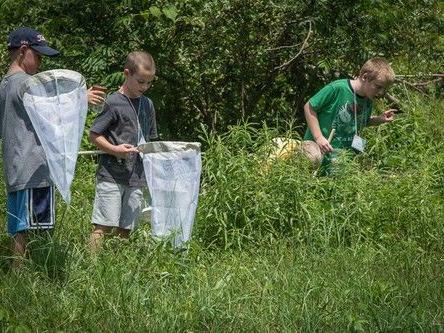Summer is here and so are the bugs!
Well, actually most of the ‘bugs” bugging you aren’t really bugs. All bugs are insects, but not all insects are bugs. Bugs belong to the group entomologists call Hemiptera. Most of the big-time problem insects are the flies, called Dipterans, and the bees, ants and wasps, the Hymenopterans. But before you all go “Bah, humbug” on these insects that are bugging you, don’t forget, they’re all pollinators helping out plants.
You know that bees pollinate, but what about mosquitoes and blackflies and such? Well, first of all, only the females bite and suck blood to get the protein they need for egg development. But both males and females eat nectar from flowers to gain energy and nutrients. Getting at that nectar is also the work of pollination, and that makes them pollinators.
With all those bugs, er, “insects” flying and crawling and hopping about us they’re a ready-made subject for a young nature lover to study. For starters, one can begin an insect collection. No need to kill any insects for a collection.
Look for dead insects around lamp fixtures and windows. I keep my eye open for dead insects in parking lots and building entryways. Insects hit by cars sometimes get blown off and on to the ground. I’ve found some amazing samples of dragonflies and butterflies that way. Building entries have night lights that draw insects. I once found an incredible sample of a giant water bug in front of a store window that must have died after being attracted to the lights of the store. You can’t pin these insects in the official entomological way, but you can use egg cartons or those candy boxes with a clear plastic top to store them and show off in your insect museum. There are also inexpensive “bug boxes” with a magnifier top, available online.

What captures most young entomologists’ interests, though, is catching live insects. Easily done. Go for simple equipment. A four or five-gallon plastic tub to store equipment in also doubles as a holding container for live creepy crawlies. Plastic spoons and small paint brushes can be used to capture individual insects. Repurposed white plastic yogurt, cottage cheese, or other food containers make great capture and observation tools. An old white sheet, inexpensive insect and aquarium nets, or, even better, an old wire mesh kitchen strainer round out the list. And the budding entomologist will eventually want some insect books. The simplest and least expensive are the “Golden Guide” books.
Where to catch insects? Well, they are all around us. Any pond or still water area will be packed with all sorts of aquatic insects. Use the kitchen strainers or aquarium nets to scoop up insects hiding in the bottom sediments and floating water plants. Place your scoopings into a water-filled tub and look for creatures swimming about. Capture them with the spoons and paint brushes and place them in white food containers for close study.
Check out land habitats for terrestrial insects. Place a white sheet under a bush or the low branches of trees. Shake the branches. Watch for the insects that fall down onto the sheet. Capture them with spoons and paint brushes. Isolate them in food tubs to observe and photograph. Gather up a pile of dead leaves in the forest and spread them out on a white sheet. Look for all sorts of creatures crawling about. If something flies away, I say “no worries”: there’ll be so many more that you’ll have your tubs full before you know it. Use an insect net to sweep into leaves and branches or tall grasses and unmowed areas. Dump your net catchings onto the white sheet or the large plastic tubs and start capturing crawling, jumping and slithering insects. Before you know it, you’ll be doing your own National Geographic insect documentaries!
